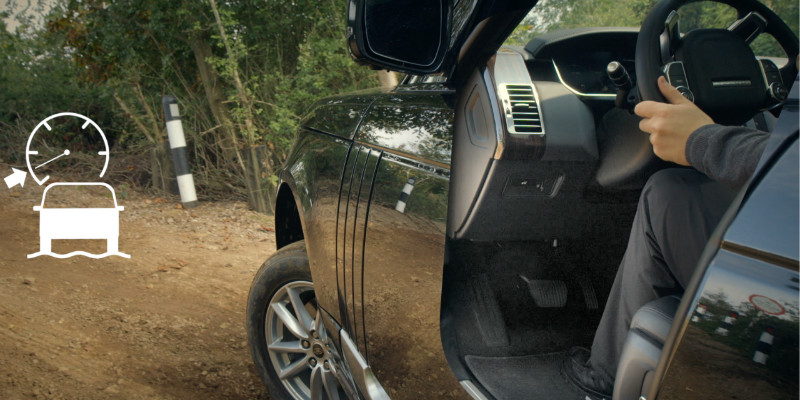The new Range Rover and Range Rover Sport have been tuned in to the times with technological updates and even feature a new heart.
The company has communicated that the new models will feature an evolution of the intelligent TerrainResponse2 system as well as a more potent SDV6, which looks set to replace the SDV8 diesel.
The TerrainResponse2 system offered previously, allows the driver to simply turn a knob to prepare the Range Rover for whatever type of terrain it is traversing or set to traverse. The new system, called All-Terrain Progress Control (ATPC), allows the driver to set a desired speed, either from rest or an existing speed, without any pedal inputs once the brake is released; similar to a cruise control system, but one which considers the type of terrain as well. The system continuously monitors and adjusts the vehicle settings to optimise traction and maintain progress in all sorts of conditions. ATPC reduces driver workload to enhance Range Rover’s world-renowned off-road capability, maintaining composure over steep gradients, rough terrain and low-grip surfaces. It is particularly beneficial in challenging off-road environment where a very low constant speed is desirable. It works both in forward and reverse and is operational from 1.6 km/h to 30 km/h.
The range of engines gets a major revamp in the diesel department. The base TDV6 now uses a single ball-bearing turbocharger, compared to the previous twin-turbo setup, and uses a low-pressure exhaust gas recirculation system (LPEGR) to optimise performance. It also features revised injector nozzles. All of these translate to output figures of 258 PS at 4,000 RPM and 600 Nm of peak torque at 2,000 RPM. Efficiency is correspondingly higher, with an 8.5% improvement in the big Range Rover and a 5.7% improvement in the Sport. The new SDV6 diesel, offered only with the Range Rover Sport, uses sequential parallel turbocharging but now puts out 306 PS at 4,000 RPM and a V8-equalling 700 Nm of torque between an extremely low but narrow 1500-1750 RPM band. The Range Rover looks likely to continue with the 339-PS/700-Nm 4.4-litre SDV8.
The line-up will also include the SCV6 supercharged V6 petrol option. The 3.0-litre V6 makes 340 PS and 450 Nm of torque. The top-of-the-line model will, of course, be the SCV8 with the 5.0-litre supercharged V8 delivering all of 510 PS and 625 Nm. But wait, there is that SVR model the company was talking about, so replace those top-of-the-line thoughts and put them together with 550 PS and 680 Nm. The incredibly capable ZF eight-speed automatic transmission continues to drive all four wheels in every variant.
Apart from those major changes, there are new exterior paint colours to choose from, Yulong White for the Range Rover and Sport, and an exclusive Kaikoura Stone for the Sport. The new Range Rover siblings will debut a head-up display (HUD) inside.
Phil Popham, Group Marketing Director, Jaguar Land Rover, stated, “Range Rover and Range Rover Sport offer an unrivalled combination of performance, efficiency, design leadership and off-road capability. Our latest updates capitalise on these strengths, with our ground-breaking new All Terrain Progress Control, along with extra-efficient six-cylinder engines, which underline Land Rover’s commitment to sustainability.’
Story: Jim Gorde





















Leave a Reply